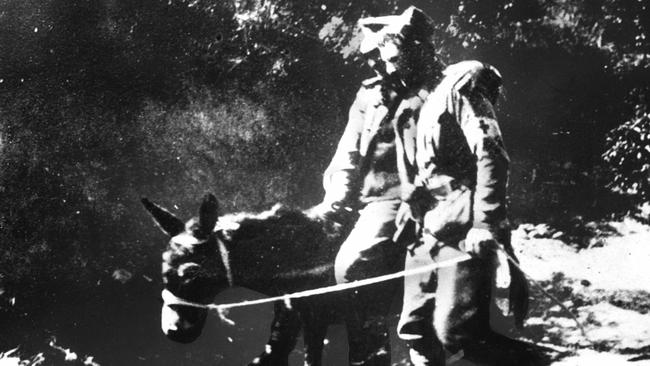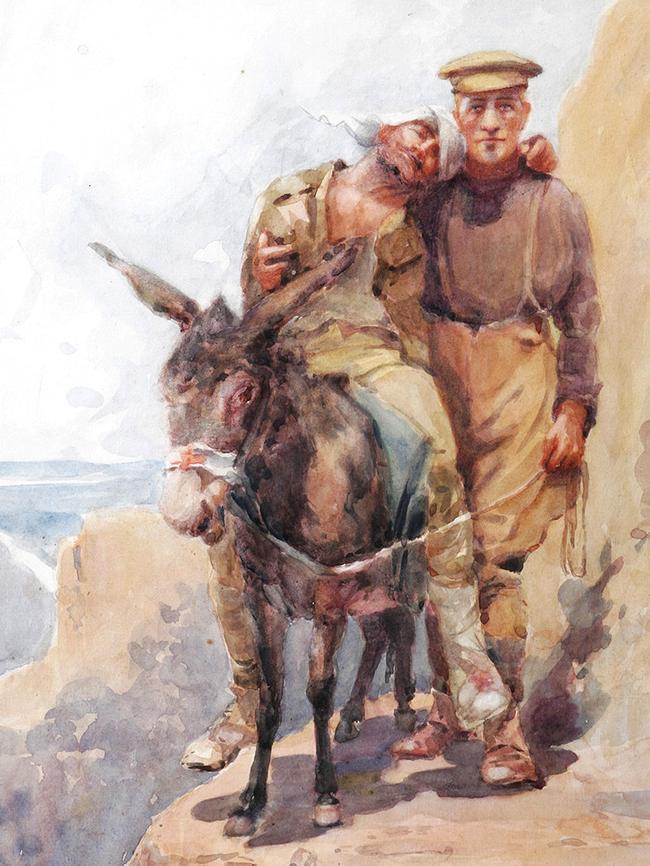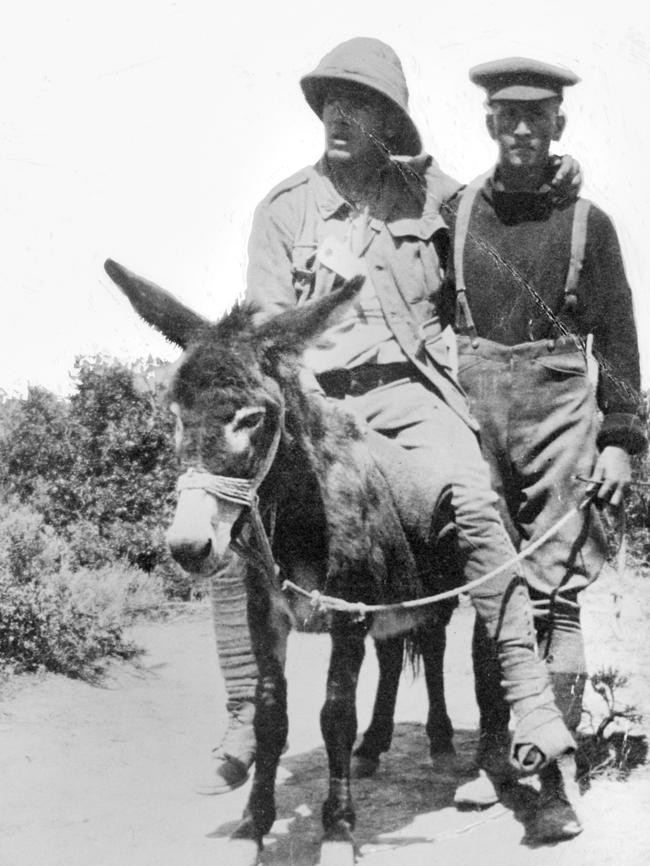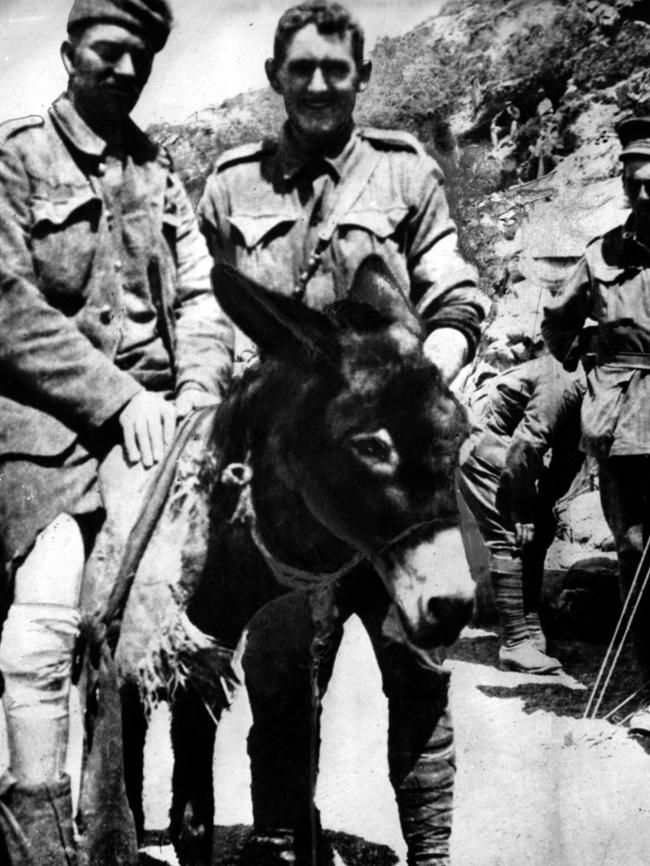Comrade’s donkey photo inspired an Anzac legend
A photograph snapped at Gallipoli a century ago today would become one of our enduring images of the campaign.

Today in History
Don't miss out on the headlines from Today in History. Followed categories will be added to My News.
The Gallipoli campaign was just over three weeks old when New Zealand stretcher bearer private James Gardiner Jackson snapped a photo of a fellow bearer using a donkey to transport a wounded soldier.
The photo, taken a century ago today, was seen by artist Horace Moore-Jones who used it as the basis for a painting titled Simpson And His Donkey, one of many watercolours he painted based on his memories of Gallipoli.
Of all the images he created, the man with a donkey became his most famous. It also made famous the man after whom it was named — John Simpson. Yet the man in the photo on which Moore-Jones had based his image was not Simpson but Richard Alexander “Dick” Henderson. Also Simpson was actually John Kirkpatrick.


Jackson was born in Dunedin in 1890, enlisted in August 1914 and arrived in Gallipoli with the Field Ambulance service of the New Zealand Medical Corps. Henderson, born in Waihi in 1895, had also enlisted in 1914. Both men tended wounded aboard the hospital ships in the first days of the Gallipoli campaign before finally going ashore.
There they got to know the Indian troops who had brought donkeys and mules, to pull their field artillery and to help carry wounded. They also got to know Simpson who had ingratiated himself with the Indians, to the point that he had established himself in their camp because he preferred their food over the endless supply of bully beef and hard tack.
Simpson was born John Kirkpatrick in South Shields, England in 1892, to Scottish parents. He used his middle name Simpson to enlist because he had deserted from the merchant navy. Simpson had arrived on April 25 and soon realised the business of carrying wounded in stretchers was hard work.
Stretcher bearers were mostly musicians, religious men or men who specifically objected to killing but had signed up to do their bit. They carried wounded in flimsy wood and canvas stretchers provided by the army, down the often narrow tracks and steep inclines. To make the work easier Simpson and other bearers had started using donkeys.
Simpson is believed to have worked with horses and donkeys in England and legends grew about his affinity with them. Henderson was also comfortable with the beasts of burden and on May 12, 1915, his friend Jackson took the photo of him aiding a wounded man. A week later, on May 19, Simpson was shot dead and Henderson continued using Simpson’s donkey, nicknamed Murphy. Peter Cochrane, in his book Simpson And The Donkey: The Making Of A Legend (Melbourne University Press), notes that most original diaries from the time don’t mention Simpson’s death.

Henderson went on to serve in Western Europe, but his efforts with the donkeys were largely forgotten while the legend of Simpson grew after his death.
Moore-Jones would help that legend grow. Born in England in 1868, he had migrated with his family to New Zealand in 1885. At the outbreak of war he was in his forties but lied about his age to enlist. Wounded at Gallipoli while carrying stretchers, he was sent to England to recover and took up the brush to paint his images of the Gallipoli campaign.
He was touring New Zealand in 1916, giving lectures about his experiences illustrated by his paintings, when he was asked what he knew of Simpson. He decided to create an image of the donkey man to use in his lectures. He knew Jackson had taken photos while in Gallipoli so Moore-Jones visited Jackson’s brother to see if any negatives Jackson sent home had images of Simpson.
There were none of Simpson but Moore-Jones used the one of Henderson to create his famous painting. He did several versions of the painting but the best known version was later bought by the Australian government and used to publicise the brave efforts of stretcher bearers in the war.
Henderson later tried to correct the record but by then Simpson’s name was too well known.



